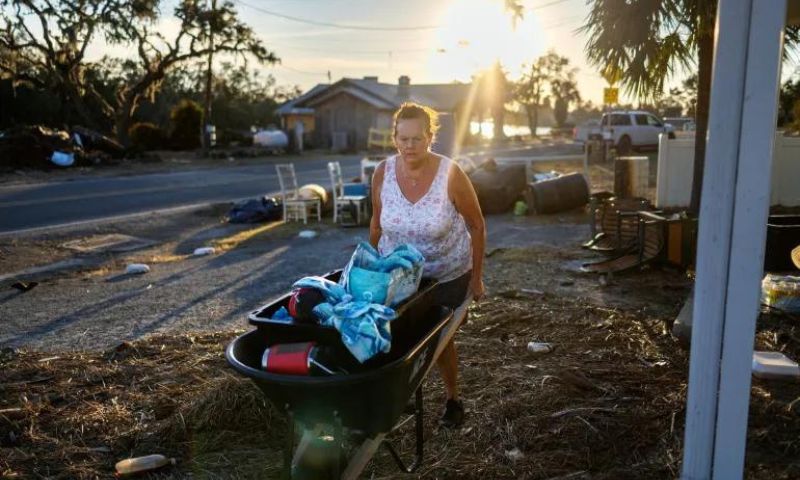WASHINGTON: At least 100 people have lost their lives due to devastating floods in the southeastern United States, officials reported Monday. The emergency response has quickly turned into a political issue as the region approaches a pivotal presidential election.
Rescue efforts are underway to find survivors and deliver supplies across Florida, Georgia, North Carolina, South Carolina, and Tennessee, where torrential rains from Hurricane Helene have wreaked havoc. Many residents are grappling with power outages, supply shortages, blocked roads, and disrupted communication in often mountainous areas.
Republican candidate Donald Trump plans to visit Valdosta, Georgia—a key state in the upcoming election and an epicenter of the flooding damage. In contrast, his Democratic opponent, Vice President Kamala Harris, has canceled campaign events to return to Washington for a federal response briefing. President Joe Biden is also scheduled to address the nation from the White House and plans to visit the hardest-hit areas later this week, once emergency operations are stable.
North Carolina Governor Roy Cooper described the situation as catastrophic, noting that hundreds of roads have been destroyed and entire communities “wiped off the map.” He stated, “This is an unprecedented storm,” and emphasized the ongoing danger as rivers continue to rise. The focus remains on saving lives and delivering essential supplies to those in need.
Scientists attribute the rapid intensification of hurricanes to climate change, which provides warmer ocean waters that fuel storms. The current death toll includes 39 fatalities in North Carolina, 25 in South Carolina, 17 in Georgia, 14 in Florida, four in Tennessee, and one in Virginia, with numbers expected to increase.
Nearly two million households and businesses are without power, according to poweroutage.us. Hurricane Helene struck Florida’s northern coast as a powerful Category Four storm late Thursday, with winds reaching 225 kilometers per hour. Even as it weakened, the hurricane left a path of destruction that extended more than 804 kilometers inland.























